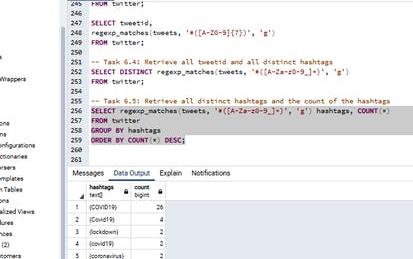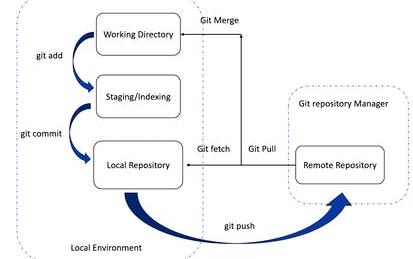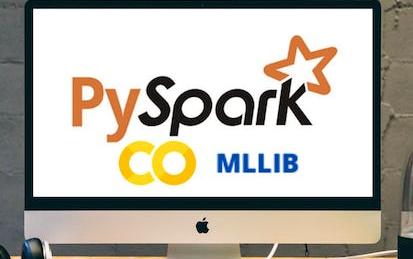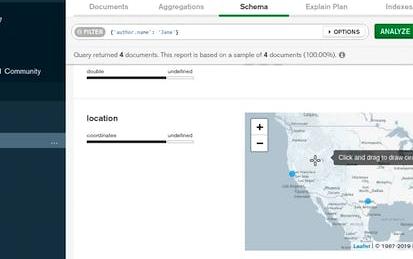

Our Courses

Graphic Elements of Design: Color Theory and Image Formats
Examining and exploring the various types of images and graphic elements will be the focus of this course. We will start with color theory to distinguish between CMYK, Pantone and RGB color options and their usages. Then we will review the various types of images used in both print and digital design projects. Finally we will look at logo designs to determine what makes for the best images and graphic elements for corporate branding and imaging.
-
Course by

-
 Self Paced
Self Paced
-
 12 hours
12 hours
-
 English
English

Political Economy of Institutions and Development
This course is part of the SDG initiative addressing the UN Sustainable Development Goals, specifically for the following SDGs [1, 8, 10 and 16]. We hope you will join in our efforts to reach the SDG’s in small but measurable and actionable ways, cooperating with Development Done Differently. Expand your impact. You can create a better world. In today’s world, politics and economics are interconnected, but what is the nature of this connectivity?
-
Course by

-
 Self Paced
Self Paced
-
 22 hours
22 hours
-
 English
English

Mindfulness: An Approach to Stress Reduction
The course focuses on developing mindfulness skills and techniques, enhancing self-regulation and self-awareness, and improving body awareness, with a strong emphasis on stress management and attentional skills. It may include a variety of practices and activities such as meditation, breathing exercises, and body scans to promote relaxation, emotional regulation, and mental clarity. Participants may also learn practical tools to incorporate mindfulness into daily routines, set intentions for mindfulness practice, and manage stress effectively.
-
Course by

-
 Self Paced
Self Paced
-
 8 hours
8 hours
-
 English
English

Spanish Vocabulary Project
In this course, we'll imagine that you are applying for an all-expenses paid, educational trip to a Spanish-speaking nation of your choice. You'll introduce yourself to a host family that you'll be staying with, research the rich culture and history of the place you intend to visit and compare it with your own country, and plan out an itinerary of places you plan to see, and things you plan to do and experience while visiting. In addition, you'll summarize the key points of your written report in an oral presentation.
-
Course by

-
 Self Paced
Self Paced
-
 22 hours
22 hours
-
 English
English

Manipulating Data with SQL
In this course you will learn to write the SQL code to manipulate the data in a relational database table. You’ll begin by populating the table with data. Since a database and its tables are designed and built to be repositories of data, getting the data into the tables is a critical activity in the building of a working database. When building a new home, the real test of your design comes when the furniture and family move in.
-
Course by

-
 Self Paced
Self Paced
-
 2 hours
2 hours
-
 English
English

Introduction to Regular Expressions in SQL
Welcome to this project-based course, Introduction to Regular Expressions in SQL. In this project, you will learn how to use SQL regular expressions extensively for pattern matching to query tables in a database. By the end of this 2-and-a-half-hour-long project, you will be able to use POSIX regular expressions together with meta (special) characters in the WHERE clause and the SELECT clause to retrieve the desired result from a database. In this project, we will move systematically by first revising the use of the LIKE and NOT LIKE operators in the WHERE clause.
-
Course by

-
 Self Paced
Self Paced
-
 3 hours
3 hours
-
 English
English

Source control management for test automation with Git
Every development team or automation team needs a good way to collaborate and manage changes and to version code in their codebase.
-
Course by

-
 Self Paced
Self Paced
-
 3 hours
3 hours
-
 English
English

Physics 101 - Forces and Kinematics
This first course serves as an introduction to the physics of force and motion. Upon completion, learners will understand how mathematical laws and conservation principles describe the motions and interactions of objects around us. Learners will gain experience in solving physics problems with tools such as graphical analysis, algebra, vector analysis, and calculus. This first course covers 1D Kinematics, 2D Kinematics, and Newton's Laws. Each of the three modules contains reading links to a free textbook, complete video lectures, conceptual quizzes, and a set of homework problems.
-
Course by

-
 Self Paced
Self Paced
-
 30 hours
30 hours
-
 English
English

Motion Planning for Self-Driving Cars
Welcome to Motion Planning for Self-Driving Cars, the fourth course in University of Toronto’s Self-Driving Cars Specialization. This course will introduce you to the main planning tasks in autonomous driving, including mission planning, behavior planning and local planning. By the end of this course, you will be able to find the shortest path over a graph or road network using Dijkstra's and the A* algorithm, use finite state machines to select safe behaviors to execute, and design optimal, smooth paths and velocity profiles to navigate safely around obstacles while obeying traffic laws.
-
Course by

-
 Self Paced
Self Paced
-
 32 hours
32 hours
-
 English
English

Cloud Data Security
This course gives learners an opportunity to explore data security in the cloud. In this course, learners will: * Dive into the data services offered by cloud providers and compare their security features. * Analyze a data breach and trace it back to the vulnerability that made it possible. * Learn about database injection and aggregation attacks. * Follow the life cycle of a data item and its relationship to privacy and integrity. * Associate modern privacy requirements with US and European laws.
-
Course by

-
 Self Paced
Self Paced
-
 11 hours
11 hours
-
 English
English

Cross Functional Collaboration
Welcome to the "Cross-Functional Collaboration" course! This course focuses on the principles and strategies for collaborating effectively with colleagues from different functional areas. Through this course, you will learn techniques to overcome challenges, foster teamwork, and leverage diverse perspectives to achieve common goals.
-
Course by

-
 Self Paced
Self Paced
-
 7 hours
7 hours
-
 English
English

Publishing Visualizations in R with Shiny and flexdashboard
Data visualization is a critical skill for anyone that routinely using quantitative data in his or her work - which is to say that data visualization is a tool that almost every worker needs today. One of the critical tools for data visualization today is the R statistical programming language. Especially in conjunction with the tidyverse software packages, R has become an extremely powerful and flexible platform for making figures, tables, and reproducible reports.
-
Course by

-
 Self Paced
Self Paced
-
 12 hours
12 hours
-
 English
English

Build a Budget and Analyze Variance using Google Sheets
By the end of this project, you will be able to build a simple budget using Google Sheets. You will be able to easily capture variances and identify trends. You will be able to format your budget, identify and communicate drivers of variances and make the budget presentable. Note: This course works best for learners who are based in the North America region. We’re currently working on providing the same experience in other regions.
-
Course by

-
 Self Paced
Self Paced
-
 3 hours
3 hours
-
 English
English

Advanced Portfolio Construction and Analysis with Python
The practice of investment management has been transformed in recent years by computational methods. Instead of merely explaining the science, we help you build on that foundation in a practical manner, with an emphasis on the hands-on implementation of those ideas in the Python programming language.
-
Course by

-
 Self Paced
Self Paced
-
 12 hours
12 hours
-
 English
English

Validity and Bias in Epidemiology
Epidemiological studies can provide valuable insights about the frequency of a disease, its potential causes and the effectiveness of available treatments. Selecting an appropriate study design can take you a long way when trying to answer such a question. However, this is by no means enough. A study can yield biased results for many different reasons. This course offers an introduction to some of these factors and provides guidance on how to deal with bias in epidemiological research.
-
Course by

-
 Self Paced
Self Paced
-
 7 hours
7 hours
-
 English
English

English and Academic Preparation - Grad Track
The English and Academic Preparation – Grad Track non-credit course is for students who wish to strengthen their academic skills in preparation for graduate studies. This certificate course is designed to help both domestic and international students communicate more effectively in spoken and written contexts, read and comprehend scholarly texts, and take notes more efficiently.
-
Course by

-
 Self Paced
Self Paced
-
 26 hours
26 hours
-
 English
English

Precalculus: Periodic Functions
This course helps to build the foundational material to use mathematics as a tool to model, understand, and interpret the world around us. This is done through studying functions, their properties, and applications to data analysis. Concepts of precalculus provide the set of tools for the beginning student to begin their scientific career, preparing them for future science and calculus courses. This course is designed for all students, not just those interested in further mathematics courses.
-
Course by

-
 Self Paced
Self Paced
-
 9 hours
9 hours
-
 English
English

Developing a Programme Management Blueprint with ClickUp
By the end of this guided project, you will be fluent in creating Programme Management blueprint for diverse projects and disciplines. You will utilise a logical diagramming plan in an agile environment to develop the solution. This will enable you to identify and classify the required phases for programmes and the functionality of domains involved in such complex process. Furthermore, it will help develop a structural model for learning about the field of Programme Management.
-
Course by

-
 Self Paced
Self Paced
-
 3 hours
3 hours
-
 English
English

Diabetes Prediction With Pyspark MLLIB
In this 1 hour long project-based course, you will learn to build a logistic regression model using Pyspark MLLIB to classify patients as either diabetic or non-diabetic. We will use the popular Pima Indian Diabetes data set. Our goal is to use a simple logistic regression classifier from the pyspark Machine learning library for diabetes classification. We will be carrying out the entire project on the Google Colab environment with the installation of Pyspark.You will need a free Gmail account to complete this project.
-
Course by

-
 Self Paced
Self Paced
-
 3 hours
3 hours
-
 English
English

Configure Your IDE with Visual Studio Code
In this 1 hour guided project, you will learn how to configure your IDE (integrated development environment) with Visual Studio Code.
-
Course by

-
 Self Paced
Self Paced
-
 4 hours
4 hours
-
 English
English

Building and analyzing linear regression model in R
By the end of this project, you will learn how to build and analyse linear regression model in R, a free, open-source program that you can download.
-
Course by

-
 Self Paced
Self Paced
-
 3 hours
3 hours
-
 English
English

Public Speaking with Canva
By the end of this project, you will explore Public Speaking using Canva to create a structure for an efficient speech to present your projects or ideas. You’ll be able to explore models and structure to feel confident in your public speaking competence and implement those skills in your life during dissertations, while pitching to your clients or while performing a TED talk, why not.
-
Course by

-
 Self Paced
Self Paced
-
 3 hours
3 hours
-
 English
English

Follow a Machine Learning Workflow
Machine learning is not just a single task or even a small group of tasks; it is an entire process, one that practitioners must follow from beginning to end. It is this process—also called a workflow—that enables the organization to get the most useful results out of their machine learning technologies. No matter what form the final product or service takes, leveraging the workflow is key to the success of the business's AI solution.
-
Course by

-
 Self Paced
Self Paced
-
 20 hours
20 hours
-
 English
English

How to find audience interests with Meta Business Suite
Facebook has a new name, and with that new name also, a new platform for their businesses. Now, better known today as Meta has a new view of everything in the Business Suite, and we want to show you how the new tools work. These will show you how to find Facebook Audience Insight. This project will show the tools you need to know this game of Meta Business Suite. That will help you find the audience following you, the one you want to impact, and how this affects or provides better options for your business.
-
Course by

-
 Self Paced
Self Paced
-
 2 hours
2 hours
-
 English
English

Continuous Integration
In today's world, software development is highly complex and often has large teams of developers working on small pieces of a larger software project. This course will go over the basic principles of using a continuous integration system effectively to constantly improve software. We're going to describe the different stations of continuous test, build, integration and deploy processes required for DevOps practices and apply best practices for quality software management, and tooling to accomplish iterative software build & test processes.
-
Course by

-
 Self Paced
Self Paced
-
 16 hours
16 hours
-
 English
English



